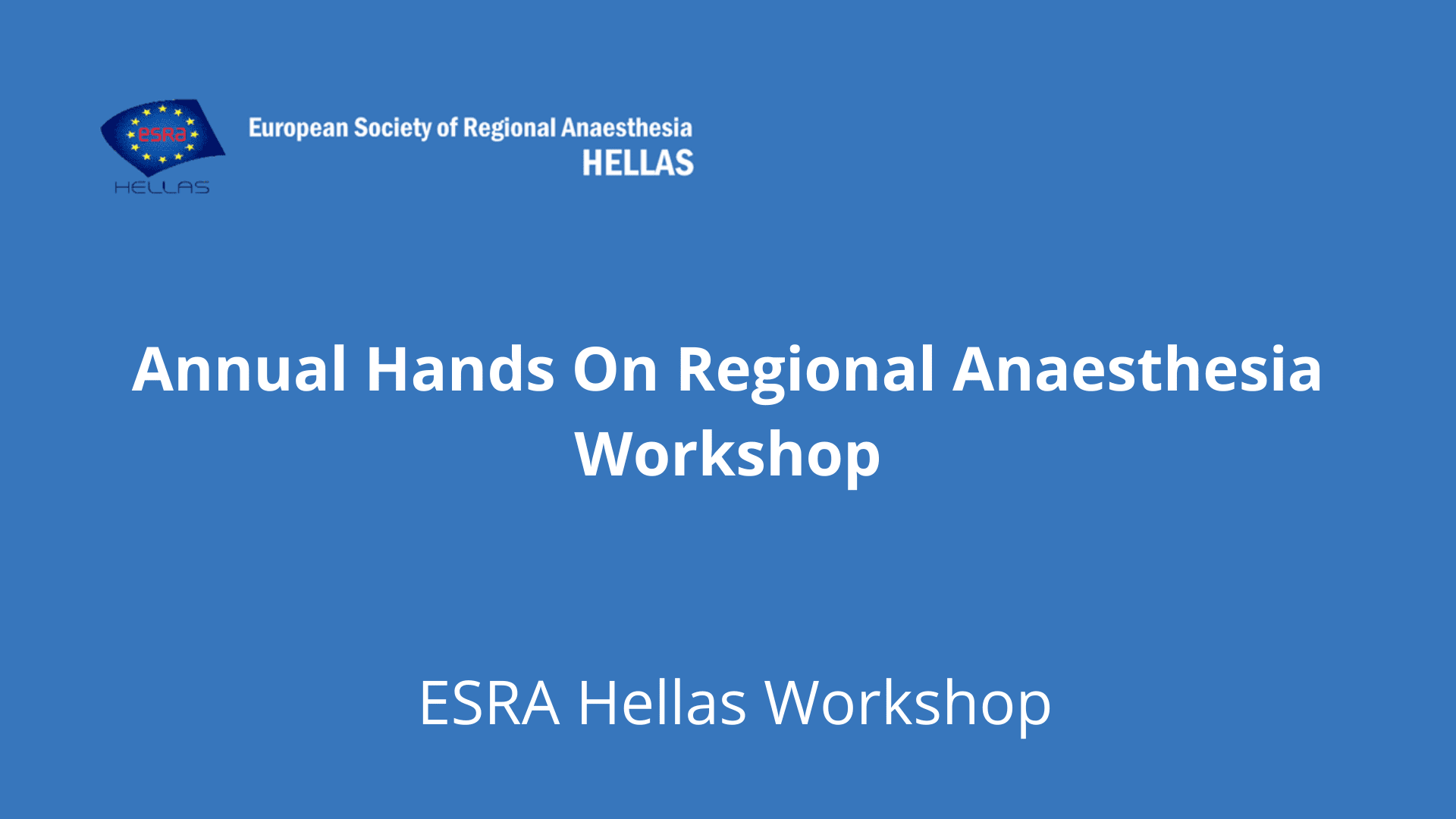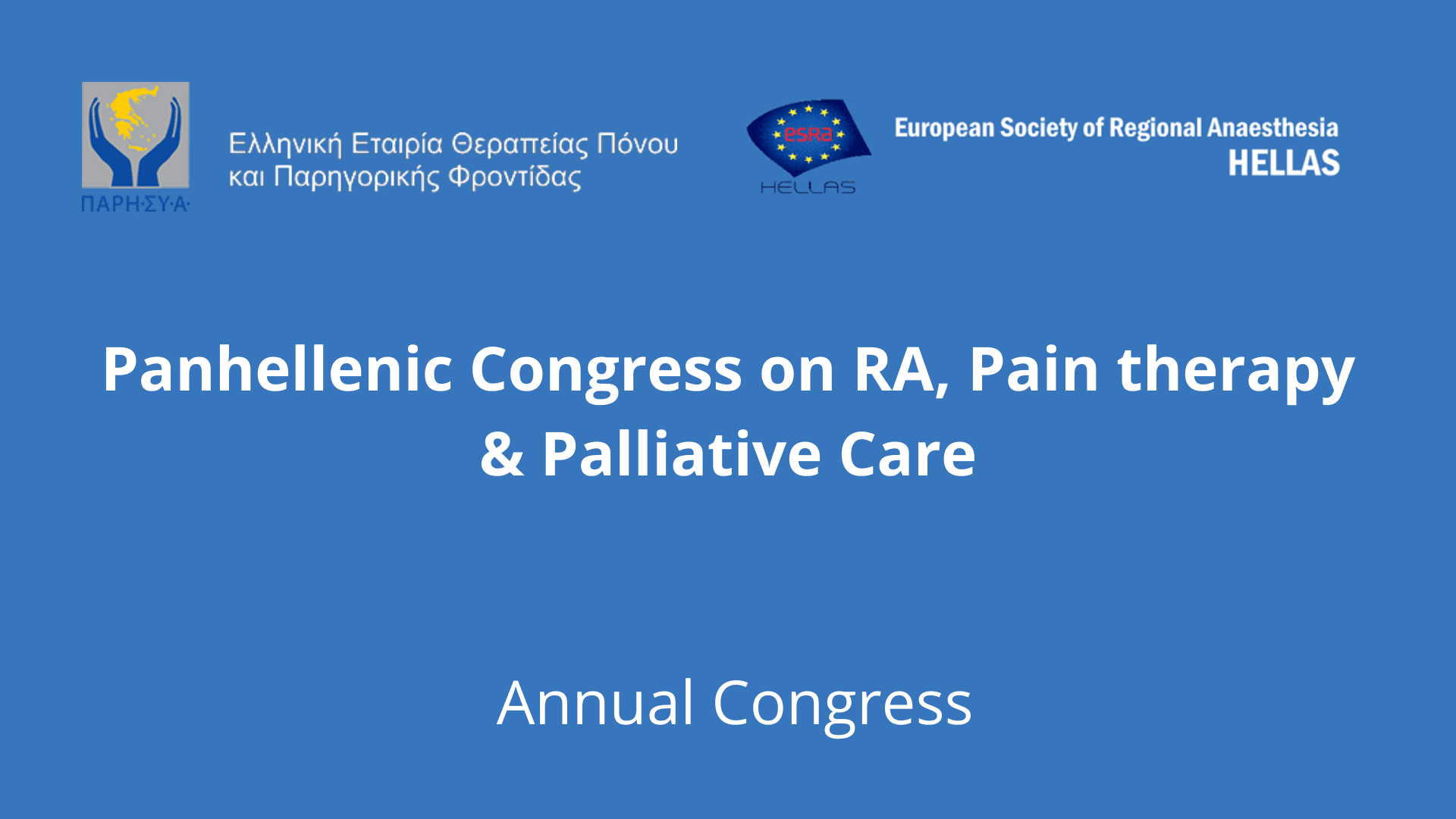NON OPIOIDS IN PERIOPERATIVE ANALGESIA: GABAPENTIN AND PREGABALIN

ESRA Highlights
27th Annual ESRA Congress
September 24 – 27, 2008, Genova, Italy
Congress Highlights
NON OPIOIDS IN PERIOPERATIVE ANALGESIA: GABAPENTIN AND PREGABALIN
Athina Vadalouca, Panayota Sykioti, Ioanna Siafaka
Faculty of Medicine, University of Athens, Greece
for full text in pfd form click here.
The severity and frequency of postoperative pain depends on the site, nature and extent of surgery. Despite improvements in the understanding of pain mechanisms and the introduction of acute pain services, the under – treatment of postoperative pain has been recognized as an important issue [1].
Α recent survey demonstrated that approximately 70 % of patients still have moderate or severe pain during the perioperative period [2].
Consistent delivery of first – class postoperative pain control is still a major challenge. Opioids are inevitably associated with emesis and the risk of respiratory depression, local anaesthetic techniques are often short – lived or require interventional procedures and the use of NSAIDs and COX – 2 inhibitors is limited by well – known complications and concerns. Consider the possibility of a drug which significantly improves the quality of opioid analgesia, reduces opioid requirements, possibly prevents or reduces opioid tolerance and relieves anxiety.
Traditionally, the pathophysiology and treatment of postoperative pain and neuropathic pain have been considered as separate and distinct. Opioids, NSAIDs and local anaesthetics were the tools of those dealing with acute pain; anticonvulsants and tricylic antidepressants were for the chronic pain specialist. However, there is considerable overlap in their pathophysiology. Allodynia and hyperalgesia are cardinal signs and symptoms of neuropathic pain but they are also often present after trauma and surgery. Sensitization of neurons in the dorsal horns, a mechanism in neuropathic pain, has been demonstrated in acute pain models. The persistence of this mechanism may be responsible for the increasingly recognized problem of chronic pain after surgery.
Gabapentin was introduced for the treatment of epilepsy in the early 1990s. Several years later, anecdotal reports describing the efficacy of gabapentin for the treatment of neuropathic pain began to appear and off – label prescribing for this indication became widespread. Despite its name, gabapentin does not bind at the GABA A and GABA B receptors. However, it has a high binding affinity for the a2δ subunit of the presynaptic voltage – gated calcium channels which inhibit calcium influx and subsequent release of excitatory neurotransmitters in the pain pathways [3].
There is now considerable interest in the potential use of gabapentin for postoperative pain relief. In a recent review, seven studies of reasonable quality were identified. Significant reductions in postoperative analgesic requirements 24h after surgery were found in six studies (abdominal hysterectomy, spinal surgery, vaginal hysterectomy, radical mastectomy and laparoscopic cholecystectomy) [4].
In another review study the authors concluded that the perioperative use of gabapentin has a significant 24-hour opioid sparing effect and improves pain score for both abdominal hysterectomy and spinal surgery. Nausea may be reduced in abdominal hysterectomy [5]. Α growing body of evidence suggests that perioperative administration of Gabapentine, is efficacious for postoperative analgesia, preoperative anxiolysis, attenuation of the haemodynamic response to laryngoscopy and intubation and preventing chronic post – surgical pain, postoperative nausea and vomiting, and delirium.
Pregabalin has anticonvulsant, antihyperalgesic, and anxiolytic properties. In a study that took place this year the authors evaluated the control of pain after perioperative administration of pregabalin 300 or 6 mg, compared with diazepam 10 mg. Altogether 91 women scheduled for laparoscopic hysterectomy were randomized to receive diazepam 10 mg (D10), pregabalin 150 mg (Ρ300) or 300 mg (Ρ600) for premedication, and the dose was repeated after 12h, except for the D10 group, in which the patients received placebo. Up until the 1st postoperative morning, analgesia was provided by oxycodone using patient controlled analgesia. In conclusion, perioperative administration of pregabalin 600mg decreases oxycodone consumption compared with diazepam 10 mg, but is associated with an increased incidence of adverse effects [6].
As optimal pain relief after surgery is difficult to be achieved with the use just one drug, many pain experts advocate the use of two or more classes of medications so as to reduce the side effects from any one drug.
The perioparative administration of the combination of celecoxib and pregabalin improved analgesia and caused fewer side effects, than either analgesic drug alone after spinal fusion surgery [7].
Gabapentin or Pregabalin may be a very useful component of multimodal analgesia for prevention and possibly management of postoperative pain. The combination of gabapentin or pregabalin with a NSAID may provide the most effective post – operative analgesia.
The answer to the question of “Do surgical patients benefit perioperative Gabapentin / Pregabalin?” comes from a systematic review of efficacy and safety of these two drugs, published last year. The authors concluded that Gabapentinoids effectively reduce postoperative pain, opioid consumption, and opioid – related adverse effects after surgery. Conclusions about the optimal dose and duration of the treatment cannot be made because of the heterogeneity of the trials. Further studies are needed to determine long term benefits, if any, of perioperative gabapentinoids [8].
References
- Pyati S. et al. Perioperatiνe Pain Management, CNS Drugs 2007; 21(3): 185 – 211.
- Apfelbaum JL et al. Postoperatiνe pain experience, Anesth Analg 2003; 97(2): 534 – 540.
- Rowbothan DJ. Gabapentin: a new drug for postoperatiνe pain? Br J Anaesth, 2006; 96(2): 152 – 155.
- Kong V et al. Gabapentin: a multimodal periperatiνe drug? Br J Anaesth; 96(6): 775 – 786.
- Mathiesen Ο et al. Gabapentin and post-op pain: A qualitatiνe and quantitatiνe systematic reνiew with focus on procedure. BMC Anaesthesiology, 2007; 7: 6.
- Jokela R et al. Α randomized controlled trial of periop adrninistration of pregabalin for pain after laparoscopic hysterectomy. Pain, 2008; 134: 106 – 112.
- Reuben S et al. The analgesic efficacy of Celecoxib, Pregabalin and of their combination for Spinal Fusion Surgery. Pain Medicine, 2006; 103(5): 1271 – 1277.
- Tiippana ΜΕ et al. Do surgical patients benefit from perioperatiνe gabapentin/pregabalin? Α systematic reνiew of efficacy and safety. Anesth Analg, 2007; 104(6): 1545 – 1556






